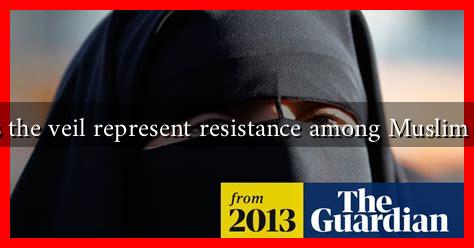-
Table of Contents
How Does the Veil Represent Resistance Among Muslim Feminists?
The veil, often a subject of intense debate and controversy, serves as a powerful symbol of identity, autonomy, and resistance among Muslim feminists. While some view it as a tool of oppression, many Muslim women embrace the veil as a means of asserting their agency and challenging patriarchal norms. This article explores the multifaceted meanings of the veil within the context of feminist resistance, highlighting its role in cultural identity, personal empowerment, and social activism.
The Veil as a Symbol of Identity
For many Muslim women, the veil is not merely a piece of clothing but a profound expression of their cultural and religious identity. It represents a connection to their heritage and faith, allowing them to navigate their identities in a world that often marginalizes them. The veil can serve as a counter-narrative to Western stereotypes of Muslim women as oppressed or submissive.
- Cultural Heritage: The veil is deeply rooted in various cultural traditions, and for many women, wearing it is a way to honor their ancestors and maintain a sense of belonging.
- Religious Expression: For devout Muslim women, the veil is an act of obedience to their faith, embodying their commitment to Islamic principles.
- Countering Stereotypes: By choosing to wear the veil, women can challenge the dominant narratives that portray them as victims, asserting their right to define their identities on their own terms.
Personal Empowerment Through Choice
One of the most significant aspects of the veil as a symbol of resistance is the element of choice. Many Muslim feminists argue that the act of wearing the veil is a personal decision that empowers them rather than confines them. This perspective emphasizes the importance of agency in women’s choices regarding their bodies and appearances.
- Autonomy: Choosing to wear the veil can be an assertion of autonomy, allowing women to reclaim control over their bodies in a society that often objectifies them.
- Defiance Against Patriarchy: By wearing the veil, women can resist societal pressures to conform to Western beauty standards, challenging the patriarchal norms that dictate how women should look.
- Community Support: The act of wearing the veil can foster a sense of solidarity among women, creating a supportive community that empowers them to stand against oppression.
Social Activism and the Veil
The veil has also become a potent symbol in social activism, with many Muslim feminists using it as a platform to advocate for broader issues such as gender equality, social justice, and religious freedom. The veil can serve as a rallying point for collective action and solidarity among women.
- Advocacy for Rights: Muslim feminists often use their visibility through the veil to draw attention to issues such as domestic violence, education, and employment rights.
- Intersectionality: The veil allows for discussions around intersectionality, highlighting how race, class, and religion intersect to shape women’s experiences.
- Global Movements: Initiatives like the #MuslimWomensDay and campaigns against Islamophobia often feature women in veils, showcasing their strength and resilience.
Case Studies and Examples
Several prominent Muslim feminists have utilized the veil as a symbol of resistance in their activism. For instance, Malala Yousafzai, a Pakistani activist for girls’ education, has often been seen wearing a headscarf, which she uses to emphasize her cultural identity while advocating for educational rights. Similarly, the work of organizations like Muslim Women’s Network UK highlights how the veil can be a source of empowerment and a tool for social change.
Conclusion
The veil, often misunderstood and misrepresented, serves as a complex symbol of resistance among Muslim feminists. It embodies cultural identity, personal empowerment, and social activism, allowing women to assert their agency in a world that frequently seeks to define them. By embracing the veil, Muslim women challenge stereotypes, reclaim their narratives, and advocate for their rights. As discussions around the veil continue, it is essential to recognize and respect the diverse meanings it holds for women across the globe, understanding that for many, it is a powerful statement of resistance and resilience.

